cnr Northgate Street & Bellevue Place, Unley Park
B 1952 J.E. Dodd & Sons Gunstar Organ
Works. 2m, 15spst, 7c, el.pn. Gt:8.8.8.4.2.8. Sw: 8.8.8.8.4.8. Ped: 16.16.8.
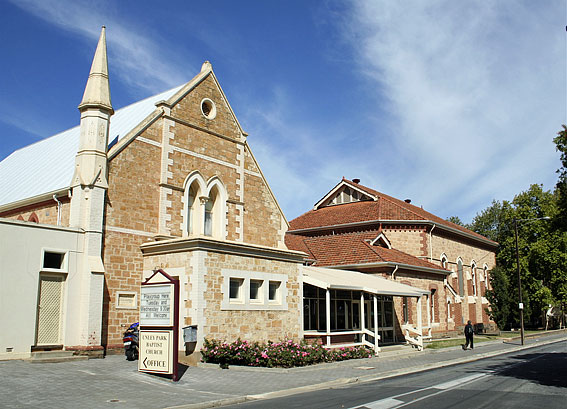
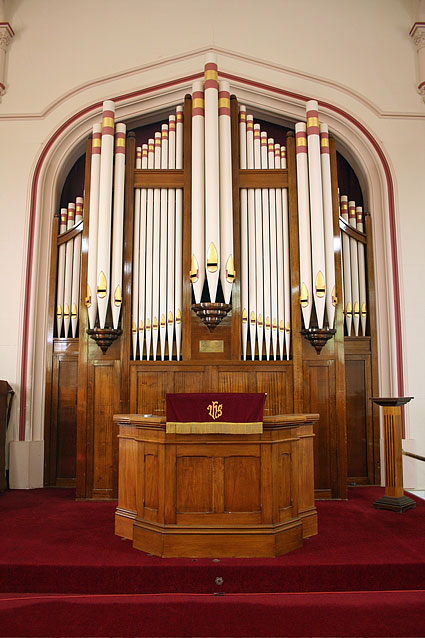
From the 2009 OHTA Conference Book, David Shield writes:
At
the turn of the 20th century there was a move by the Baptists to establish new
churches in the growing suburbs.
The village of Unley had been separated from Mitcham and declared a
corporate town in 1871. A block of
land was first offered in Malvern but rejected in favour of Northgate
Street. Although it would have
been more prominent on Unley Road, the Revd S. Fairey, who had been at Glen
Osmond and Knightsbridge, suggested the dust of a main road to be a deterrent. The current church complex has grown
from the original building, now the hall to the east, to the interconnected
structures of today. Music had
always been a prominent feature of Baptist worship at Unley Park, though not
permitted through communion.
Initially a reed organ was hired until finances permitted the
acquisition of the pipe organ.
In
July 1903, C.H. Goode, (later Sir Charles), laid the foundation stone for the
first church and three months later J.T. Miller formally opened it. By March 1914, the congregation had
outgrown the facility and it was proposed to construct a new church, the
architects being Messrs William and Good.
Without exceeding a £1000 liability it was to be an octagonal building
accommodating up to 450 people and designed such that a gallery could be added
if needed. In October 1917 a
contract was signed with T. Lewis & Son; Lady Goode laid the foundation
stone on 8 December and in June the following year, having exceeded the
liability limitations, it was complete.1
With
the new church building, enquiries were made for the installation of a pipe
organ but the size of the building debt delayed any such possibility. In March 1924 the choir was authorised
to open a pipe organ fund and, by September 1926, £260 had been raised.2 An offer of a pipe organ for £500 plus
installation costs was made in 1929 but regarded as too expensive. A further offer was made in 1932 for an
instrument of £550 but the church finances remained in straitened
circumstances. In fact, it is
interesting to note that during the depression the church borrowed money from
the pipe organ fund and repaid it later at 5% interest.3
An
arsonist attacked the Malvern Methodist and Unley Park Baptist Churches early
in 1947. At Malvern, damage was
done to the Sunday School buildings where there was severe damage including the
loss of a piano. At Unley Park,
the fire was started in the sanctuary.
Quickly noticed, it was promptly extinguished with minor damage supposedly
to the pipe organ. The media
reported damage being confined to the rear wall of the church and passageway
connecting the vestries. A
cleaning cupboard was destroyed.4
The
Revd Ernest H. Watson, himself a competent organist, occupied the pulpit at
Unley Park from 1936 to 1947. With
the end of World War II, a Peace Memorial Thanksgiving Fund was begun during
1946 with the organ, youth work and church heating in mind. Specifications for the organ were
quickly finalised. Thoughts of a
second hand instrument from Victoria were entertained but rejected in favour of
a new
This
was a period of transition for the firm.
The War had led to shortages of organ work, labour and materials. The Gunstar Organ Works, created in
1935 as a result of disagreements with Josiah Dodd, merged back to form the
firm of J.E. Dodd & Sons Gunstar Organ Works. Though built by Gunstar in 1946, the organ at Clarence Park
Methodist Church, opened in September 1947, was hailed as the first instrument
of the new firm.6
The
contract for the organ at Unley Park was not signed till March 1950. Late in 1952, the Revd E.H. Watson was
invited to make a special trip from Geelong to open the organ, free of debt, on
5 October.7
The
casework, with three towers and six flats, and banding on the upper parts of
the pipes, is an elaborate example for the period and harkens back to the
designs of J.E. Dodd, earlier in the 20th century.
J.E. Dodd & Sons Gunstar Organ Works 1952
2 manuals, 15 speaking stops, electric action
|
GREAT ORGAN |
|
|
Open Diapason |
8 |
|
Clarabel |
8 |
|
Dulciana |
8 |
|
Principal |
4 |
|
Fifteenth |
2 |
|
Horn |
8 |
|
Swell to Great Sub |
|
|
Swell to Great |
|
|
Swell to Great Super |
|
|
|
|
|
SWELL ORGAN |
|
|
Violin Diapason |
8 |
|
Stopped Diapason |
8 |
|
Salicional |
8 |
|
Celeste |
8 |
|
Gemshorn |
4 |
|
Oboe |
8 |
|
Tremulant |
|
|
Swell Sub Octave |
|
|
Swell Super Octave |
|
|
|
|
|
PEDAL ORGAN |
|
|
Bourdon |
16 |
|
Dulciana |
16 |
|
Flute |
8 |
|
Swell to Pedal |
|
|
Great to Pedal |
|
Compass: 61/30
Detached stopkey console
3 thumb pistons to Great
(duplicated by toe pistons)
3 thumb pistons to Swell
(duplicated by toe pistons)
1 additional toe piston
(Full organ)
balanced swell pedal
_________________________________________________________________________
1 Badger L., Celebrate
100 Unley Park Baptist Church 1903-2003, Hyde Park Press, 2003, pp.21-22
2 Unley Park Baptist
Church Inc Northgate St 1903-1963 Diamond Jubilee celebrations 21st
– 28th July 1963;
Badger op.cit., p.76 says permission was given in 1923
3 Ibid. Note
further research is needed to verify the provenance of the organs offered prior
to the current instrument.
4 Advertiser Monday 3 February 1947; Badger op.cit., p.36
refers to the pipe organ damage but is clearly in error. The accompanying photograph shows a
reed organ
5 Diamond Jubilee
op.cit., specifications were completed in March 1947 though the contract was
not signed until March 1950.
6 Advertiser, 22 September 1947, 5.3, South Australian
Methodist 19 September 1947, 3.2
7 Badger, op.cit., p.39; the 1953 date
given on p.77 is a typographical error
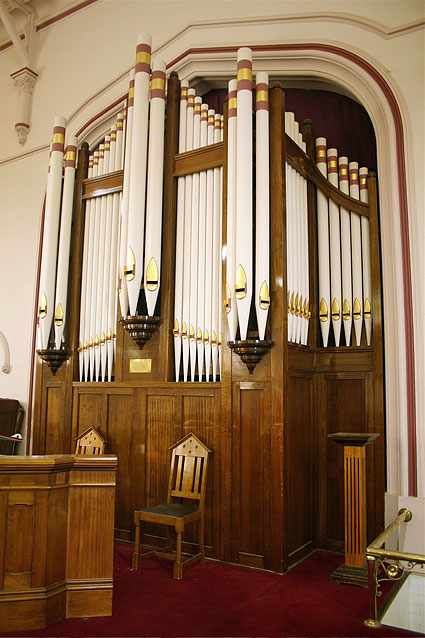 |
 |
|
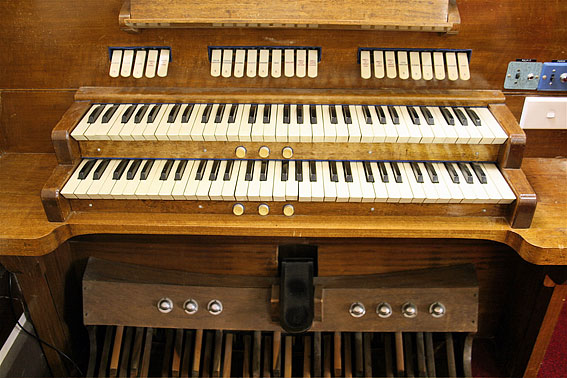
|
||
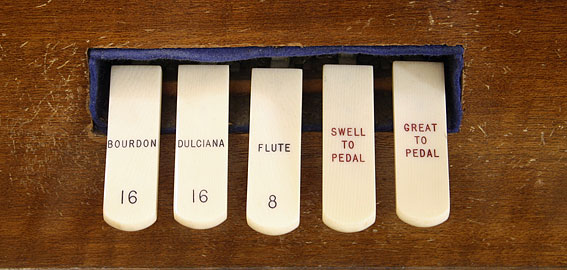
|
||
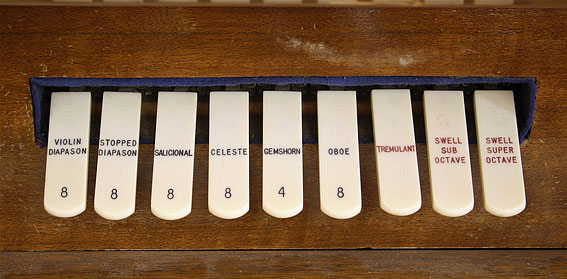
|
||
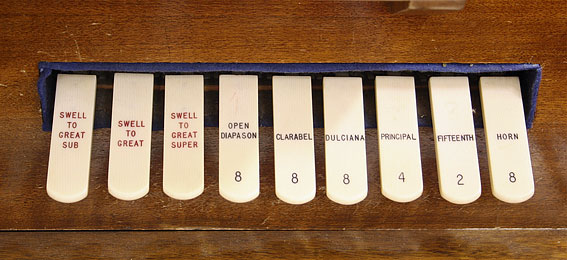
|
||
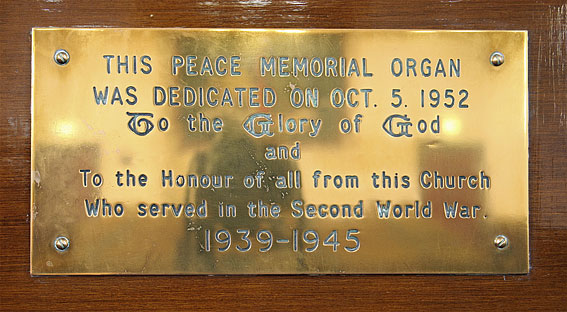
|
||
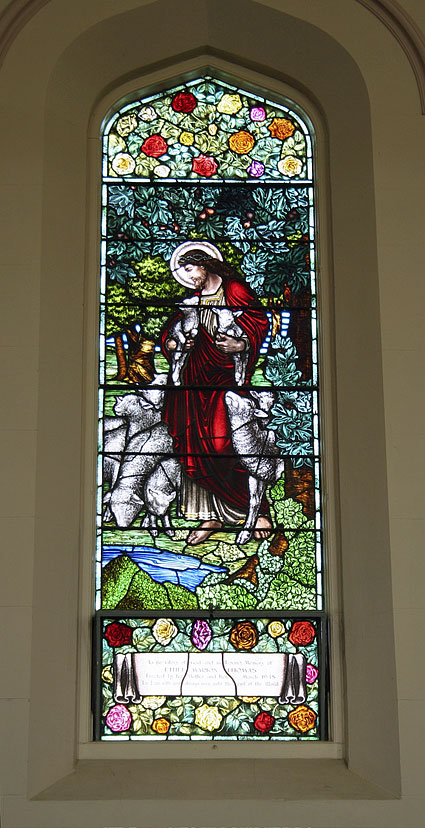 |
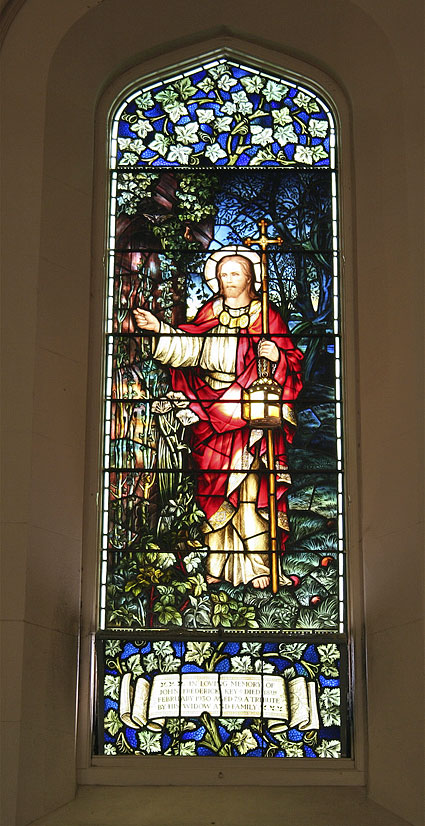 |
|
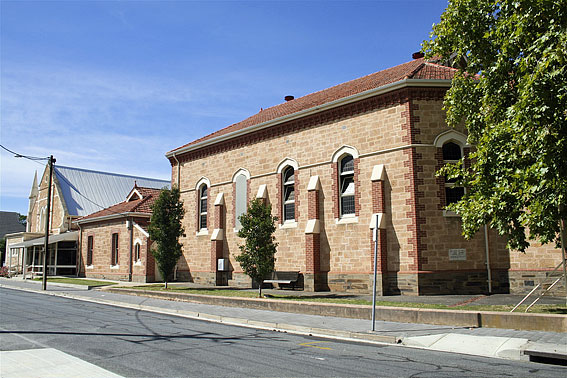
|
||
Photos: Trevor Bunning (March 2009)